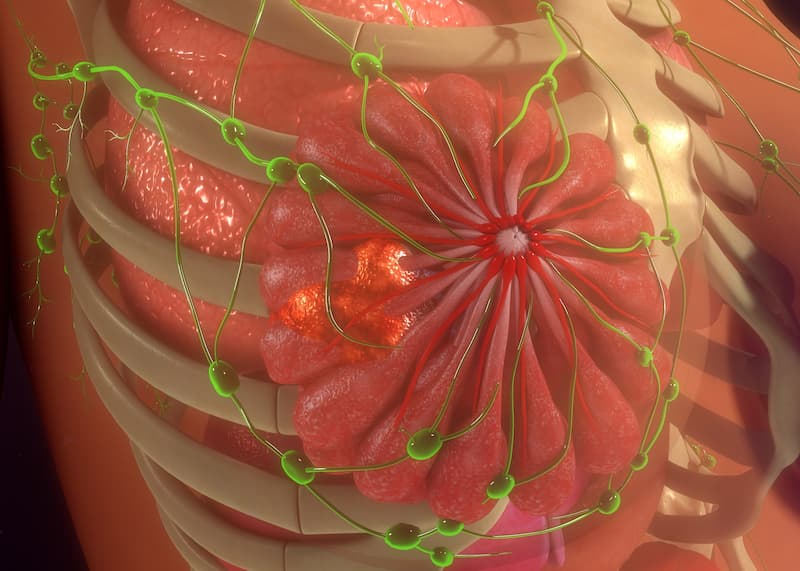Pelareorep Combo Yields Survival Benefit in HR+/HER2– Breast Cancer
Pelareorep plus paclitaxel improved the overall response rate vs paclitaxel monotherapy among patients in the phase 2 BRACELET-1 study.
"With the encouraging results of BRACELET-1 and the prior positive results of the IND-213 study, pelareorep should continue to be developed and evaluated in the clinical setting," according to Martine J. Piccart, MD, PhD.

Efficacy outcomes including overall survival (OS) were improved when combining pelareorep with paclitaxel for patients with hormone receptor (HR)–positive, HER2-negative advanced or metastatic breast cancer, according to a press release on findings from the phase 2 BRACELET-1 study (NCT04215146).1
Data showed that the median OS was not reached (NR) with pelareorep/paclitaxel vs 18.2 months among patients who received paclitaxel monotherapy (HR, 0.48; 95% CI, 0.17-1.35). Based on the assumption of study follow-up continuing past 2 years, the median OS was estimated to be 32.1 months in the pelareorep arm. At 2 years, the OS rates were 64% vs 33% in the pelareorep/paclitaxel and paclitaxel monotherapy arms, respectively.
The final median progression-free survival (PFS) in the pelareorep/paclitaxel arm was 12.1 months (95% CI, 6.6-15.9) compared with 6.4 months (95% CI, 3.7-NR) among patients who received paclitaxel alone (HR, 0.39; 95% CI, 0.12-1.24).
Combining pelareorep with paclitaxel elicited a confirmed overall response rate (ORR) of 37.5% compared with 13.3% using paclitaxel monotherapy. At week 16, the respective response rates were 31% vs 20%.
Findings from the BRACELET-1 trial appear to substantiate previously reported data from the phase 2 IND-213 study (NCT01656538), in which investigators assessed pelareorep plus chemotherapy vs chemotherapy alone among a comparable patient population.
“[Although] there has been progress in the treatment of advanced and metastatic breast cancer, an unmet medical need remains,” Martine J. Piccart, MD, PhD, a professor of Oncology at the Université Libre de Bruxelles and director of Medicine at the Jules Bordet Institute, in Brussels, Belgium, said in the press release.1 “With the encouraging results of BRACELET-1 and the prior positive results of the IND-213 study, pelareorep should continue to be developed and evaluated in the clinical setting.”
In the open-label BRACELET-1 study, a total of 45 patients with HR-positive, HER2-negative, endocrine-refractory metastatic breast cancer were randomly assigned 1:1:1 into 3 treatment cohorts. Patients were assigned to receive paclitaxel monotherapy (n = 15), pelareorep plus paclitaxel (n = 16), or triplet therapy consisting of paclitaxel, pelareorep, and avelumab (Bavencio; n = 17). Investigators administered paclitaxel at 80 mg/m2 intravenously on days 1, 8, and 15 of a 28-day cycle; pelareorep at 4.5 x 1010 tissue culture infectious dose 50 intravenously on days 1, 2, 8, 9, 15, and 16; and avelumab at 10 mg/kg intravenously on days 3 and 17.2
The trial’s primary end point was ORR at week 16. Additionally, exploratory end points included PFS, peripheral and tumor T cell clonality, inflammatory markers, and safety and tolerability.
Patients 18 years and older with histologically or cytologically confirmed breast cancer and unresectable locally advanced or metastatic disease unamenable to curative therapy were eligible for enrollment on the trial. Other enrollment requirements included having an ECOG performance status of 0 or 1, willingness to provide blood samples, and disease progression on at least 1 prior line of hormone-based therapy including a CDK4/6 inhibitor.
“The [OS] and final [PFS] results from the BRACELET-1 final analysis exceeded our expectations. In addition, our translational data strongly suggest that the OS benefit was linked to pelareorep’s immunologic activity. Taken together, the BRACELET-1 results provide compelling support for the potential of pelareorep-based combination therapy to benefit patients with advanced or metastatic [HR-positive, HER2-negative] breast cancer,” Thomas Heineman, MD, PhD, chief medical officer at Oncolytics Biotech Inc., the developers of pelareorep, concluded.1
References
- Oncolytics Biotech® reports favorable results for BRACELET-1 breast cancer study reinforcing path to funding of a registration-enabling study. News release. Oncolytics Biotech Inc. September 19, 2024. Accessed September 19, 2024. https://tinyurl.com/fryzvzu6
- A study to assess overall response rate by inducing an inflammatory phenotype in metastatic BReast cAnCEr with the Oncolytic Reovirus PeLareorEp in CombinaTion with anti-PD-L1 avelumab and paclitaxel - BRACELET-1 study. ClinicalTrials.gov. Updated November 30, 2023. Accessed September 19, 2024. https://tinyurl.com/ujfe6txp
Gedatolisib Combo With/Without Palbociclib May Be New SOC in PIK3CA Wild-Type Breast Cancer
December 21st 2025“VIKTORIA-1 is the first study to demonstrate a statistically significant and clinically meaningful improvement in PFS with PAM inhibition in patients with PIK3CA wild-type disease, all of whom received prior CDK4/6 inhibition,” said Barbara Pistilli, MD.